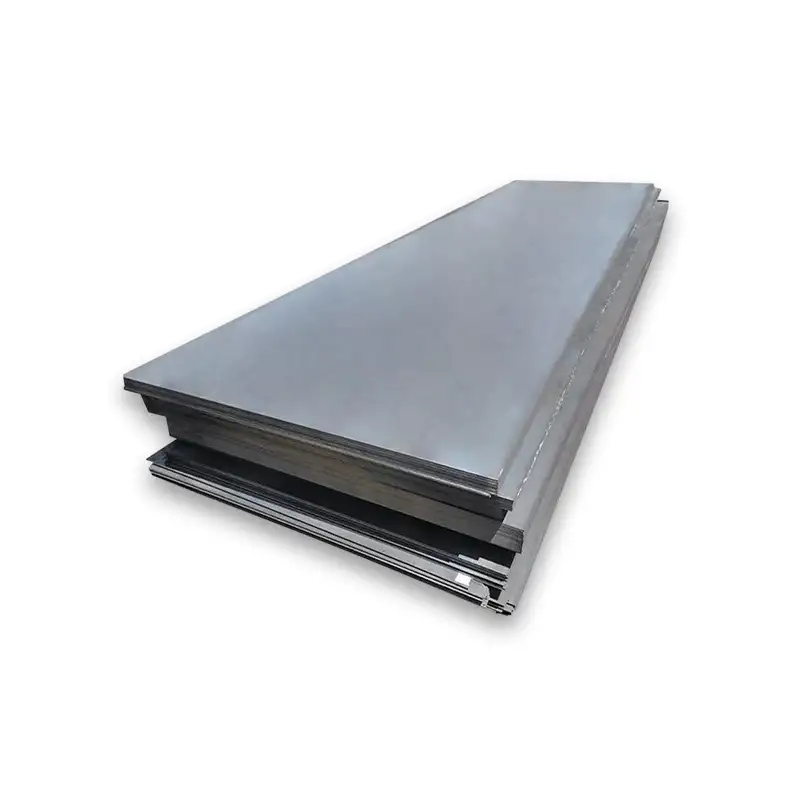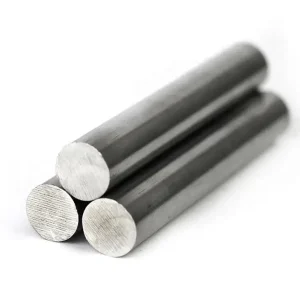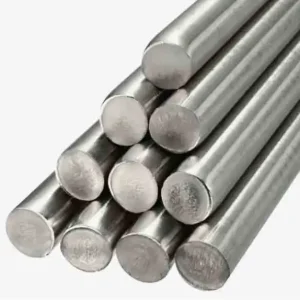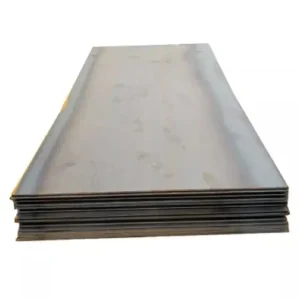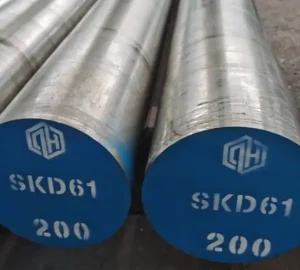ASTM A588 (commonly called A588 weathering or Corten B) is a high-strength, low-alloy structural plate engineered to form a protective rust patina that slows further corrosion; it offers a minimum yield of 50 ksi (≈345 MPa) with good weldability and is widely used for exposed structural parts (bridges, towers, architectural façades). For buyers needing factory-direct supply from China with competitive lead times, MWAlloys can supply A588 plates at 100% factory pricing and fast stock delivery for standard sizes.
What is ASTM A588 Carbon Steel Plate?
ASTM A588/A588M is the ASTM standard titled “Standard Specification for High-Strength Low-Alloy Structural Steel, up to 50 ksi [345 MPa] Minimum Yield Point, with Atmospheric Corrosion Resistance.” The standard covers plates, shapes and bars used for welded, riveted or bolted construction where improved atmospheric corrosion resistance is required; A588 is commonly referenced for bridges, towers, freight containers, architectural elements and sculptures. The standard describes required chemical composition ranges, mechanical properties, Charpy impact energy conditions (when specified), and delivery/test requirements.
Also read: ASTM A573/A573M Carbon Steel Plate
Chemical composition
Below is a consolidated, industry-standard composition table for ASTM A588 (representative for Grade A/B types). Individual mill certificates should always be checked — standards allow composition ranges and may differ slightly by grade and mill.
| Element | Typical range (wt.%) — A588 (representative) |
|---|---|
| Carbon (C) | 0.10 – 0.19 |
| Manganese (Mn) | 0.90 – 1.25 |
| Phosphorus (P) | ≤ 0.04 (max) |
| Sulfur (S) | ≤ 0.05 (max) |
| Silicon (Si) | 0.15 – 0.30 |
| Chromium (Cr) | 0.40 – 0.65 |
| Copper (Cu) | 0.25 – 0.40 |
| Vanadium (V) | 0.02 – 0.10 |
| Ni, Mo, Nb | typically trace or controlled per mill (varies) |
| Iron (Fe) | Balance |
Notes: exact limits and permissibles (e.g., max C for different thicknesses) are provided in the ASTM A588 text and by individual mills. The above table is synthesized from commonly published mill data for A588; always request the mill certificate (MTC) for the precise batch composition.
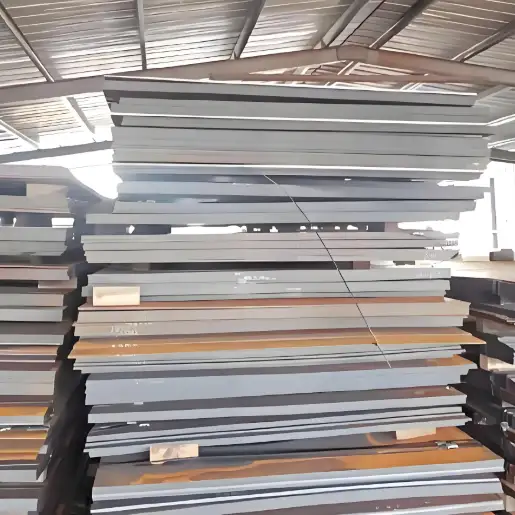
Mechanical & physical properties
The following properties reflect the standard minimums and commonly published mill values for A588 plate (typical for thicknesses ≤ 8 in / 200 mm where the ASTM standard applies):
| Property | Minimum / Typical |
|---|---|
| Yield strength (Rp0.2 or 0.2% offset) | 50 ksi (345 MPa) minimum |
| Tensile strength (UTS) | ~70 ksi (≈485 MPa) typical minimum |
| Elongation (in 2 in / 50 mm) | ≥ 18% (varies with thickness) |
| Charpy V-notch (when specified) | Values depend on ordering (often required for cold regions) |
| Density | 7.85 g/cm³ (≈7850 kg/m³) — use for mass calcs |
| Hardness | Typically ~120–180 HB depending on heat & thickness |
| Maximum usable thickness (spec limit) | Up to ~8 in (ASTM scope; check latest revision) |
Engineering design should use certified, batch-specific test results from the supplier. For structural weld procedures and impact requirements consult AISC/AASHTO guidance for weathering steels.
ASTM A588 specification notes & grade distinctions
ASTM A588 plates are often offered in several “grades” and product notations depending on the mill and product line (common commercial labels include Grade A, Grade B, Grade K). Important specification points:
-
Minimum yield: 50 ksi (345 MPa) — the defining mechanical minimum.
-
Thickness range: Standard production typically covers thin sheet up to thick plate (ASTM limits in the standard specify plate applicability; check latest standard for upper thickness limits).
-
Charpy impact testing: May be specified by purchaser for particular service temperatures — typical bridge specifications require low-temperature impact energy.
-
Welding consumables & pre/post heat: Use welding procedures qualified for weathering steels; filler metal selection affects corrosion resistance of the weld area — see AISC/NSBA guidance.
What is equivalent to ASTM A588?
Common international equivalents (approximate equivalents — always confirm for your application):
-
EN: S355J2W / S355J0W family (EN 10025-5 weathering steels) — often taken as the European counterpart.
-
JIS (Japan): SPA-H (weathering steel grades).
-
ASTM family: A242 and A606 are related weathering steels (A242 is the earlier Cor-Ten / A related grade).
-
AASHTO: M-222 maps to A588 for highway/bridge specifications.
Practical note: “Equivalent” is a convenience — composition, Charpy energy, and weldability requirements vary; always choose the correct standard or obtain material certificates showing compliance with the demanded standard (mill test certificates).
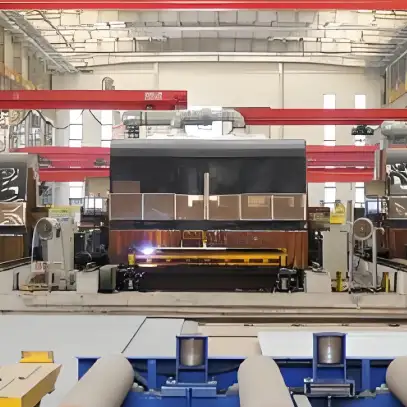
Sizes, standard widths & weight calculation
Because plates are sold in many sizes, below are typical thicknesses and weight per square foot figures (useful for site logistics and quick estimating). Weight numbers are industry standard approximations; confirm with supplier.
Steel density used = 490 lb/ft³ (≈7850 kg/m³) — so weight (lb/ft²) = thickness (in) × 490 / 12 = thickness (in) × 40.833 lb/ft². Many vendors publish the same numbers — e.g., MetalsDepot weight chart.
| Thickness (in) | Weight (lb/ft²) | Weight (kg/m²) approx |
|---|---|---|
| 1/8" (0.125) | 5.10 | 24.9 |
| 3/16" (0.1875) | 7.66 | 37.4 |
| 1/4" (0.25) | 10.21 | 49.8 |
| 3/8" (0.375) | 15.31 | 74.8 |
| 1/2" (0.5) | 20.42 | 99.7 |
| 3/4" (0.75) | 30.63 | 149.5 |
| 1" (1.0) | 40.84 | 199.3 |
Typical commercial sheet widths/lengths: 48" × 96", 60" × 120", 1500–2500 mm widths and lengths up to 12 m for mill supply depending on mill capabilities. For accurate shipping weight, include kerf, packing and handling allowances.
2025 Indicative price comparison (United States | Europe | China)
Important: steel prices fluctuate rapidly with raw material markets, tariffs, logistics and order quantity. The table below gives indicative FOB/wholesale ranges observed from distributors and Chinese mill exporters in 2025 (mid-year observations). Use these as a procurement starting point — request firm quotes.
| Region | Indicative 2025 range (USD/ton) | Typical qty / notes |
|---|---|---|
| United States (distributors / small orders) | ~$900 – $1,400 / ton (small cut-to-size prices can be higher per sqft). | Retail distributors sell small pieces; industrial buyers may get lower. |
| Europe (distributors / OEM supply) | ~$600 – $900 / ton (regional variations & MEPS indices apply). | European production and import dynamics affect price. |
| China (mill FOB / bulk export) | ~$500 – $950 / ton (many FOB listings show $500–900/ton for A588/A242). | Chinese mills list wide ranges depending on thickness, quantity, and certification. |
How to interpret:
-
Small orders (cut pieces) in the US often yield higher $/ton equivalents because of cutting/handling premiums.
-
Bulk buyers buying directly from Chinese mills commonly receive the lower end of the listed ranges (FOB).
-
For European onshore supply, MEPS/Metal Bulletin/Platts or local distributors are the authoritative commercial sources; regional logistics and VAT must be considered.
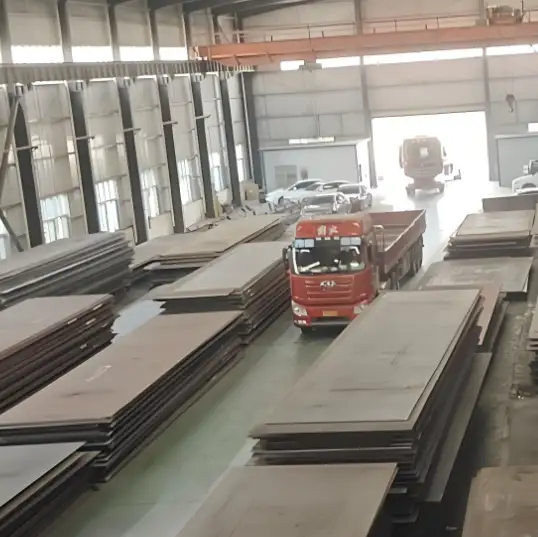
Fabrication, welding & best practices
Practical recommendations for fabricators working with A588:
-
Welding consumables: choose filler metals recommended for weathering steels if the weld area must also develop protective patina; consult AWS/AASHTO/AISC welding tables. Avoid fillers that introduce dissimilar corrosion behavior unless post-weld protection is planned.
-
Preheat / interpass: follow qualified WPS; for thicker plate or low ambient temperature, preheating and controlled interpass temperatures may be required.
-
Cut edges and corrosion: freshly cut edges corrode faster than mill-finished surfaces until patina matures; details should avoid water collection.
-
Surface contact: avoid contact with dissimilar metals that accelerate galvanic corrosion. Use insulating materials where contact is unavoidable.
-
Use environment: A588 performs best in alternating wet/dry atmospheres where the patina can form; avoid in continuously submerged or chloride-rich splash zones (coating or different alloy required).
For structural bridge design and welding, consult the AISC/NSBA weathering steel guidance and the NCHRP technical reports for details.
Corrosion behavior, patina development & design guidance
-
Patina formation: initial surface oxidation creates a tightly adherent layer that slows further corrosion. Full patina maturity can take months to years depending on environment (humid, wet cycles accelerate formation but chloride speeds degradation).
-
Design for drainage: avoid crevices and vertical surfaces that trap water. Drainage details greatly influence long-term performance.
-
Welded areas: weld metal may not patina the same color or rate as base metal; specified filler and sometimes post-weld treatments are used to harmonize appearance and corrosion resistance.
Quality assurance & documentation to request
When buying A588, insist on:
-
Mill Test Certificate (MTC) showing chemical composition and mechanical test results (yield, UTS, elongation).
-
Heat/batch traceability and stamping/marking matching certificate.
-
Impact test records if service temperature or bridge codes require Charpy values.
-
Third-party inspection for large or critical orders (e.g., Lloyd’s, SGS, BV).
-
Welding/fabrication documentation if parts are to be welded in the shop or field.
How MWAlloys supplies ASTM A588
As MWAlloys’ materials experts, here’s what we provide for A588 buyers:
-
Factory-direct pricing: 100% factory pricing for bulk orders through our Chinese mills and partner foundries.
-
Stock & quick delivery: standard thicknesses and common plate sizes in stock for rapid shipment; sample & cut-to-size options available.
-
Certificates & traceability: full MTCs, heat numbers and optional third-party inspection on request.
-
Custom packing & logistics: export packing, container loading expertise and CIF / FOB shipping options.
-
Technical support: welding/fabrication guidance for A588 to ensure performance in your environment.
Contact MWAlloys’ sales team with thickness, width, length, quantity (tons), required standard (A588 A/B/K), and destination port for a firm offer.
FAQs
Is A588 the same as Corten?
A588 is a weathering steel often marketed as COR-TEN® B / Corten B equivalent; the trade name COR-TEN is a trademark (check mill stamping).
Can A588 be used in marine environments?
Not recommended for constant splash/immersion or high-chloride environments; corrosion protection or alternate alloys are better.
What is the minimum yield strength?
50 ksi (≈345 MPa) as per ASTM A588.
Do welds rust differently?
Weld metal and HAZ may patina differently; choose compatible filler metals or perform post-weld treatments.
What certificates should I request?
Mill Test Certificate (MTC), heat number, and impact test records (if specified).
How fast does the patina form?
Months to years depending on climate; wet/dry cycles accelerate uniform patina; sheltered/water-trapping details slow it.
Are there European equivalents?
EN 10025-5 grades (S355J0W / S355J2W family) are commonly treated as equivalents for design purposes — verify tests and composition.
Can A588 be painted?
Yes — though often specified to remain unpainted; if painted, use appropriate primers and coatings designed for weathering steels.
How is weight calculated?
Use steel density (≈7.85 g/cm³). Weight (lb/ft²) ≈ thickness (in) × 40.833. See weight chart above.
What are typical 2025 price ranges?
Indicative ranges: China $500–950/ton (FOB), Europe $600–900/ton, US small-order rates higher (retail distributors). For firm prices, request quote from MWAlloys.
Authoritative references
- ASTM A588/A588M — Standard Specification for High-Strength Low-Alloy Structural Steel, up to 50 ksi Minimum Yield Point, with Atmospheric Corrosion Resistance (ASTM International).
- Uncoated Weathering Steel Reference Guide — American Institute of Steel Construction (AISC / NSBA) — practical design and welding guidance.
- AASHTO Materials Standards with ASTM Equivalencies — American Association of State Highway and Transportation Officials (useful conversions between AASHTO and ASTM like M-222 ↔ A588).
- Guidelines for the Use of Weathering Steel in Bridges — NCHRP Research Report (comprehensive technical background and best practices for weathering steels in highway structures).

